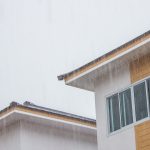One should not use exterior house paint for interior painting. Interior house paints are specifically formulated for indoor use and are designed to withstand typical indoor conditions. Exterior house paints, on the other hand, are formulated for outdoor use and may not provide the desired results indoors.
Understanding the difference between interior and exterior paints
The main difference between interior house paint and exterior house paints lies in their formulations and intended use. Interior paints are designed for indoor surfaces, while exterior house color is formulated to withstand outdoor conditions and protect exterior surfaces from weather elements.
Explaining Interior Paints
Interior house paints are specifically formulated for use on indoor surfaces such as walls, ceilings, and trim. They are designed to provide a visually appealing finish while also offering durability and protection against typical indoor conditions like temperature changes and regular cleaning. Learn about interior house paint.

Specifically formulated for indoor use
Interior house paints are specifically formulated for indoor use, taking into account the unique conditions found inside homes. They are designed to be low in volatile organic compounds (VOCs) and provide a safe and healthy environment while delivering excellent coverage and long-lasting results on interior surfaces.
Designed to withstand typical indoor conditions
Interior paints are designed to withstand the typical conditions found inside homes. They are formulated to resist issues such as cracking, peeling, and fading that can occur due to factors like temperature changes, humidity, and regular cleaning, ensuring long-lasting beauty and durability for interior surfaces.
Interior paints come in various finishes
Interior paints offer a wide range of finishes to suit different preferences and needs. These finishes include flat, eggshell, satin, semi-gloss, and high-gloss. Each finish has its own level of sheen, durability, and suitability for different areas of the home.
Understanding Exterior House Paints:
Exterior house paints are specifically formulated for outdoor surfaces such as the exterior walls, siding, and trim of a home. House colors outside are designed to provide protection against weather elements, UV radiation, and other outdoor factors while maintaining their color and durability over time.

Specifically formulated to withstand harsh outdoor conditions
Exterior house paints are specifically formulated to withstand harsh outdoor conditions. They are designed to resist fading, cracking, peeling, and other damage caused by exposure to sunlight, rain, wind, temperature fluctuations, and other environmental factors, ensuring long-lasting performance and protection for exterior surfaces. Read more about express painting.
Designed to endure sunlight, rain, wind, and temperature fluctuations
Exterior paints are specifically designed to endure the challenges posed by sunlight, rain, wind, and temperature fluctuations. Their formulation includes ingredients that provide resistance against fading, cracking, peeling, and other forms of damage caused by outdoor elements, ensuring a durable and long-lasting finish for exterior surfaces. Explore waterproofing solutions.
Additional features like UV resistance, water resistance, and durability to protect against weather elements.
Exterior paints often include features such as UV resistance, water resistance, and enhanced durability. These properties provide extra protection against weather elements, ensuring long-term color retention and surface integrity.
Using Exterior Paints for Interior Painting
Using outside wall color for interior house paint is not recommended. Exterior paints have different formulations and are designed to withstand outdoor conditions. They may not provide the desired results indoors and could lead to issues such as poor adhesion, peeling, or an unpleasant odor.
Downsides to Using Exterior Paint Indoors
Using exterior paint indoors can have several downsides. Exterior paint may contain higher levels of volatile organic compounds (VOCs), which can contribute to poor indoor air quality.
VOCs
Volatile organic compounds (VOCs) are chemicals that can be found in paints and other products, which can evaporate and contribute to air pollution and potential health risks.
Odor
Using exterior paint indoors can result in unpleasant odors due to the different formulations and potentially higher levels of VOCs present in the paint.
Safety and Compliance
Using exterior paint indoors may not comply with safety regulations and guidelines. It is important to choose appropriate paints for specific applications to ensure safety and compliance standards are met.
FAQs
What happens if I accidentally used the exterior house color inside?
If you accidentally used exterior paint indoors, you may experience issues such as poor adhesion, peeling, cracking, or an unpleasant odor.
Can we use exterior emulsion for interior walls?
It is not recommended to use exterior emulsion for interior walls. The exterior emulsion is specifically formulated for house colors outside and may not provide the desired results or durability indoors.
How do you remove exterior house color from interior walls?
To remove exterior paint from interior walls, you can try methods such as scraping, sanding, or using paint strippers specifically formulated for removing different types of paint.
What is the difference between interior and exterior wall primer?
The main difference between interior and exterior wall primers lies in their formulations and properties.
Is outside house paint thicker than interior paint?
Yes, generally it is.


 Get in Touch
Get in Touch
